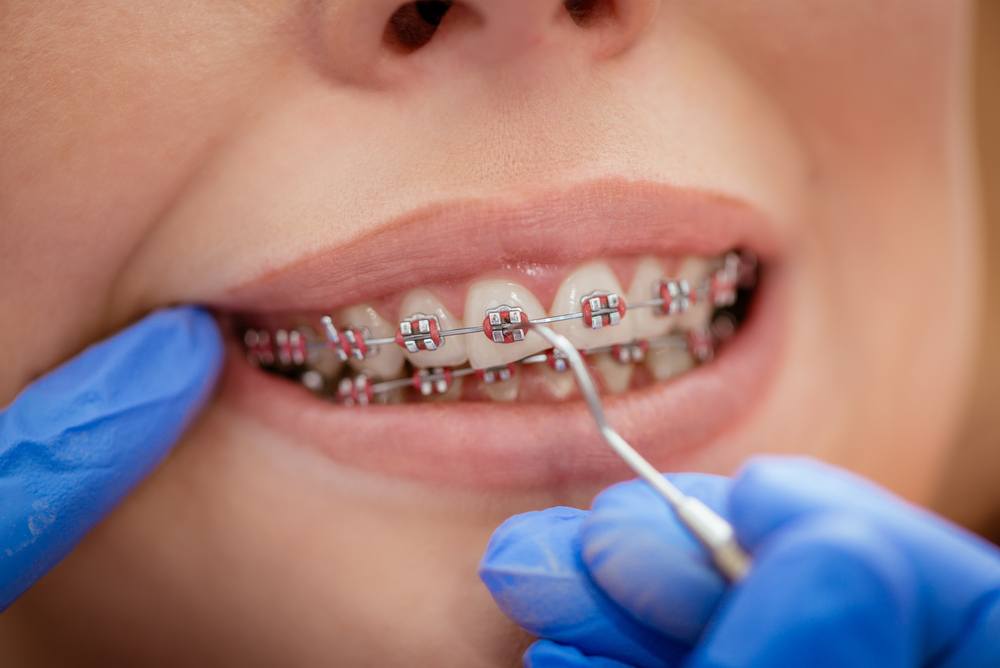Selecting the most effective Cumming Orthodontics for Effective Braces and Aligners Solutions
Selecting the most effective Cumming Orthodontics for Effective Braces and Aligners Solutions
Blog Article
Comprehensive Guide to Orthodontics Procedures for Remedying Dental Misalignments
Understanding the details of each treatment, including their devices, advantages, and possible downsides, is critical in making informed decisions regarding one's orthodontic treatment. As we navigate with the thorough guide to orthodontic treatments for remedying oral misalignments, the intricate details of each method will unfold, losing light on the path towards a unified and useful dental positioning.
Orthodontic Procedures Introduction

Routine changes and surveillance are essential parts of orthodontic treatment to guarantee progression is on track and to make any type of necessary adjustments along the way. By going through orthodontic treatments, people can not just attain a straighter grin but likewise improve their general oral health and wellness and function.
Traditional Dental Braces: Exactly How They Work
When considering orthodontic therapies for dental imbalances, typical dental braces stand apart as a tried and true technique for fixing teeth placing. Typical dental braces consist of braces, cables, and bands that function together to use constant stress on the teeth, slowly relocating them into the preferred placement. The braces are connected to the teeth using an unique adhesive, and the wires are threaded through the brackets. By adjusting the stress of the cords, orthodontists can control the instructions and force related to each tooth, guiding them right into correct alignment over time.
One key element of exactly how typical dental braces job is the procedure of bone makeover. As pressure is used to the teeth via the dental braces, the bone surrounding the teeth is reshaped to sustain the new tooth placements. This remodeling is vital for the lasting stability of the remedied placement. People will certainly require normal changes at the orthodontist's workplace to make sure the dental braces remain to use the right stress for efficient teeth motion.
Unseen Aligners: Disadvantages and pros
Invisible aligners use a very discreet and practical choice to standard braces for dealing with dental imbalances. These clear, customized trays are essentially unseen when worn, making them an appealing option for people seeking a more visually pleasing orthodontic treatment. Among the main advantages of unseen aligners is their removability, enabling less complicated upkeep of oral hygiene contrasted to traditional braces. Individuals can eliminate the aligners prior to consuming or brushing their teeth, reducing the danger of food getting stuck in the appliance and simplifying the cleansing process.

Surgical Orthodontic Options
Surgical treatments in orthodontics present sensible options for attending to intricate dental misalignments that might not be effectively solved with traditional orthodontic treatments. While conventional braces and invisible aligners can remedy lots of orthodontic issues, certain cases require surgical treatment to achieve optimal results. Surgical orthodontic options are commonly recommended for serious malocclusions, substantial jaw inconsistencies, and situations where the underlying bone structure requires alteration to accomplish proper alignment.
One typical medical orthodontic treatment is orthognathic surgery, which entails rearranging the jaws to deal with practical concerns medicaid dentist such as problem eating or talking. This surgery is usually performed in partnership with an orthodontist that helps straighten the teeth prior to and after the treatment. Surgical orthodontics may likewise involve treatments to subject influenced teeth, eliminate excess gum cells, or reshape the jawbone to develop a much more harmonious face profile.
Before considering medical orthodontic alternatives, clients undergo a comprehensive assessment to identify the requirement and possible advantages of such treatments. invisalign. While surgery might appear complicated, it can considerably improve both the feature and aesthetic appeals of the smile in instances where conventional orthodontic therapies fail
Retainers and Post-Treatment Treatment

Failing to comply with post-treatment treatment directions can result in relapse, where the teeth slowly move back towards their initial settings. Constant retainer wear, excellent oral health, and routine dental exams are important for maintaining the outcomes accomplished through orthodontic surgical procedure and making certain the lasting security of the remedied dental placement.
Verdict
In verdict, orthodontic treatments use numerous alternatives for correcting oral imbalances. Typical dental braces make use of metal braces and cords to move teeth into proper placement. Unnoticeable aligners provide an even more very discreet choice but might not appropriate for all instances. Surgical orthodontic options are available for extra severe misalignments. Retainers are frequently used post-treatment to keep the new alignment. Overall, orthodontic procedures can efficiently improve dental health and aesthetic look.
As we navigate via the comprehensive guide to orthodontic procedures for dealing with dental misalignments, the detailed details of each technique will unravel, shedding light on the course towards a useful and harmonious dental placement. - cumming braces
One of the most usual orthodontic treatments is the usage of dental braces, which are composed of metal brackets and cables that apply gentle pressure to slowly shift teeth into the preferred placement.When taking into consideration orthodontic treatments for oral misalignments, conventional dental braces stand out as a reliable approach for fixing teeth positioning. In addition, invisible aligners may not be ideal for complex orthodontic concerns see that need even more significant teeth motion, as they are generally advised for mild to modest cases. Retainers are tailor-made orthodontic tools designed to hold teeth in their remedied positions after the completion of orthodontic therapy.
Report this page